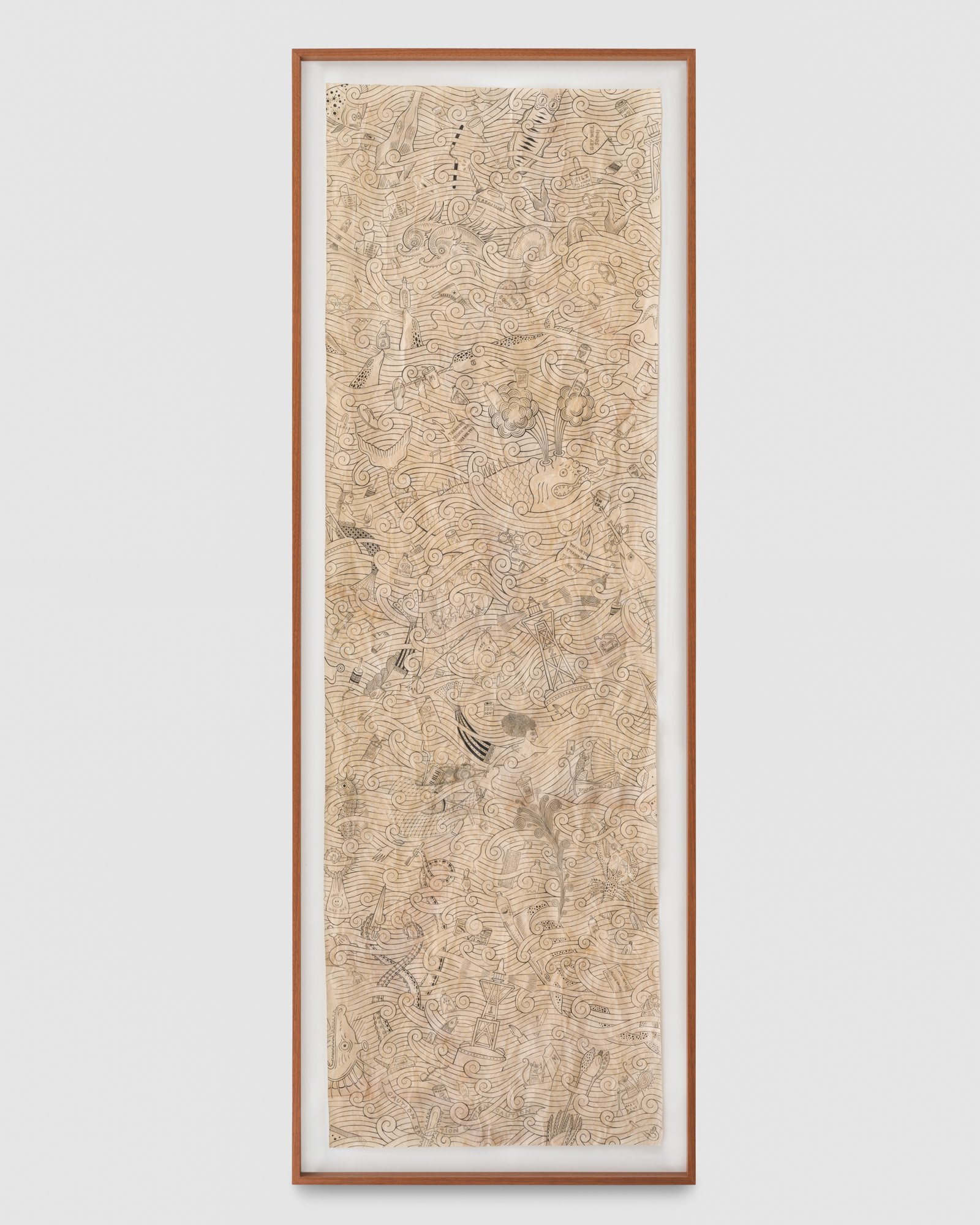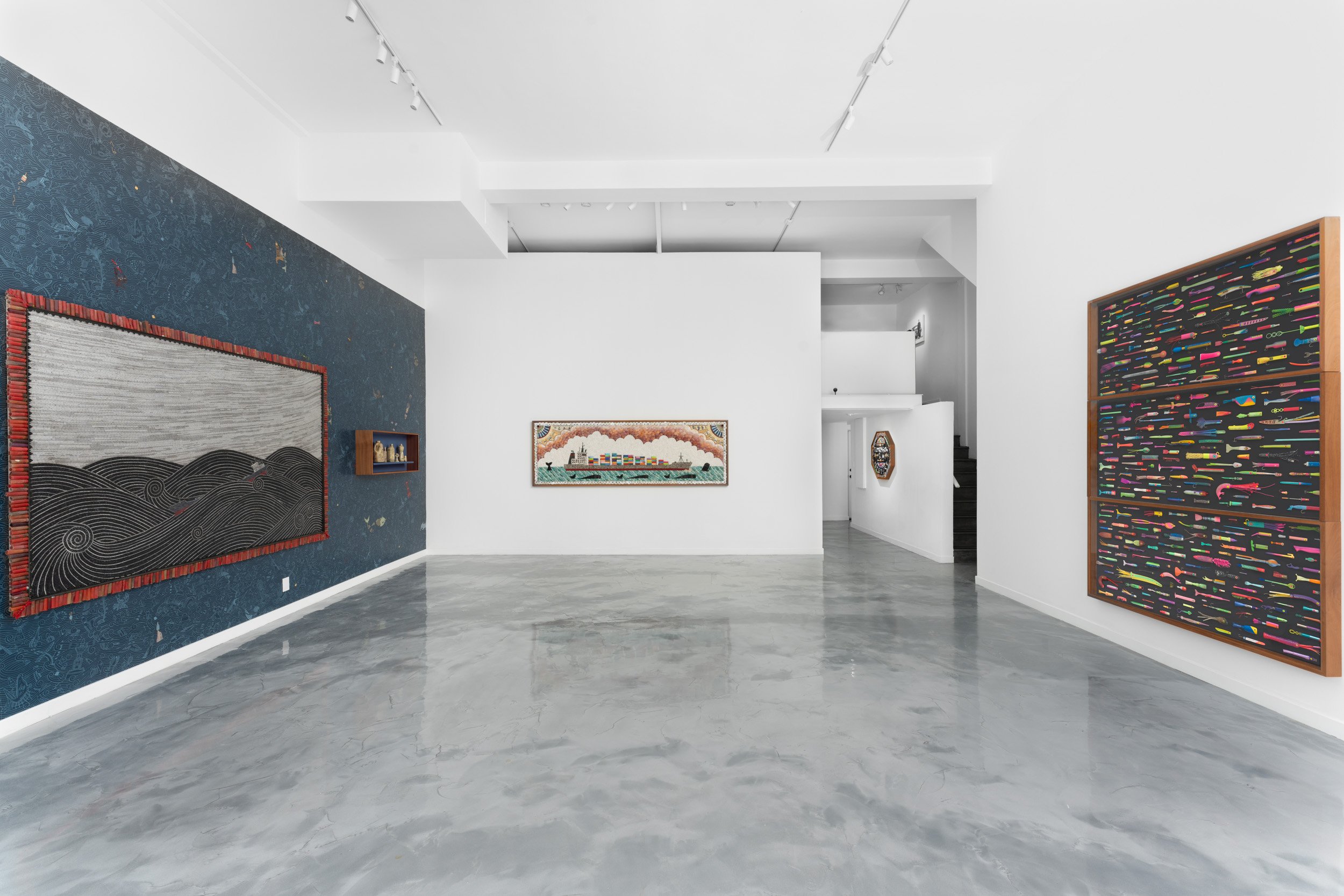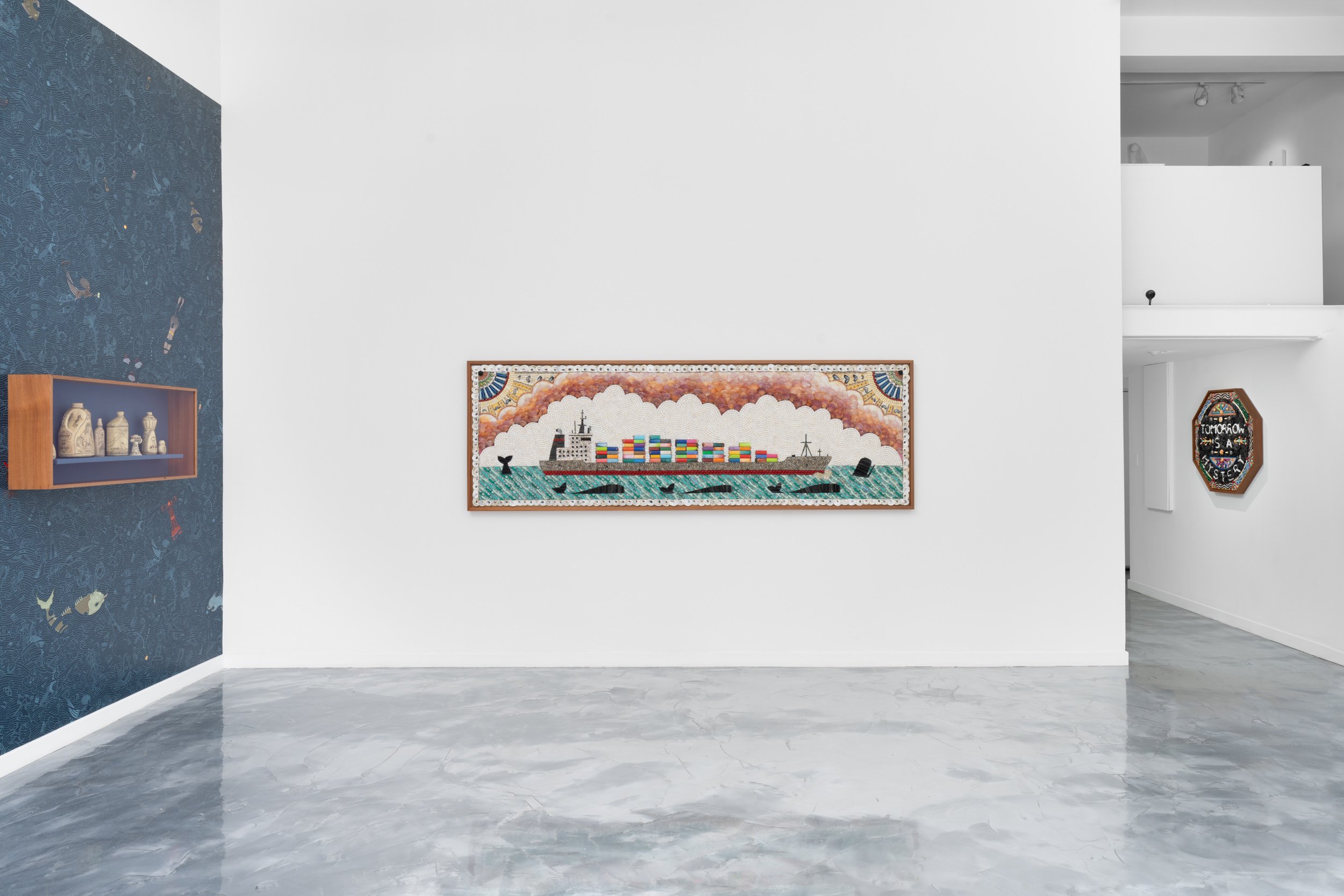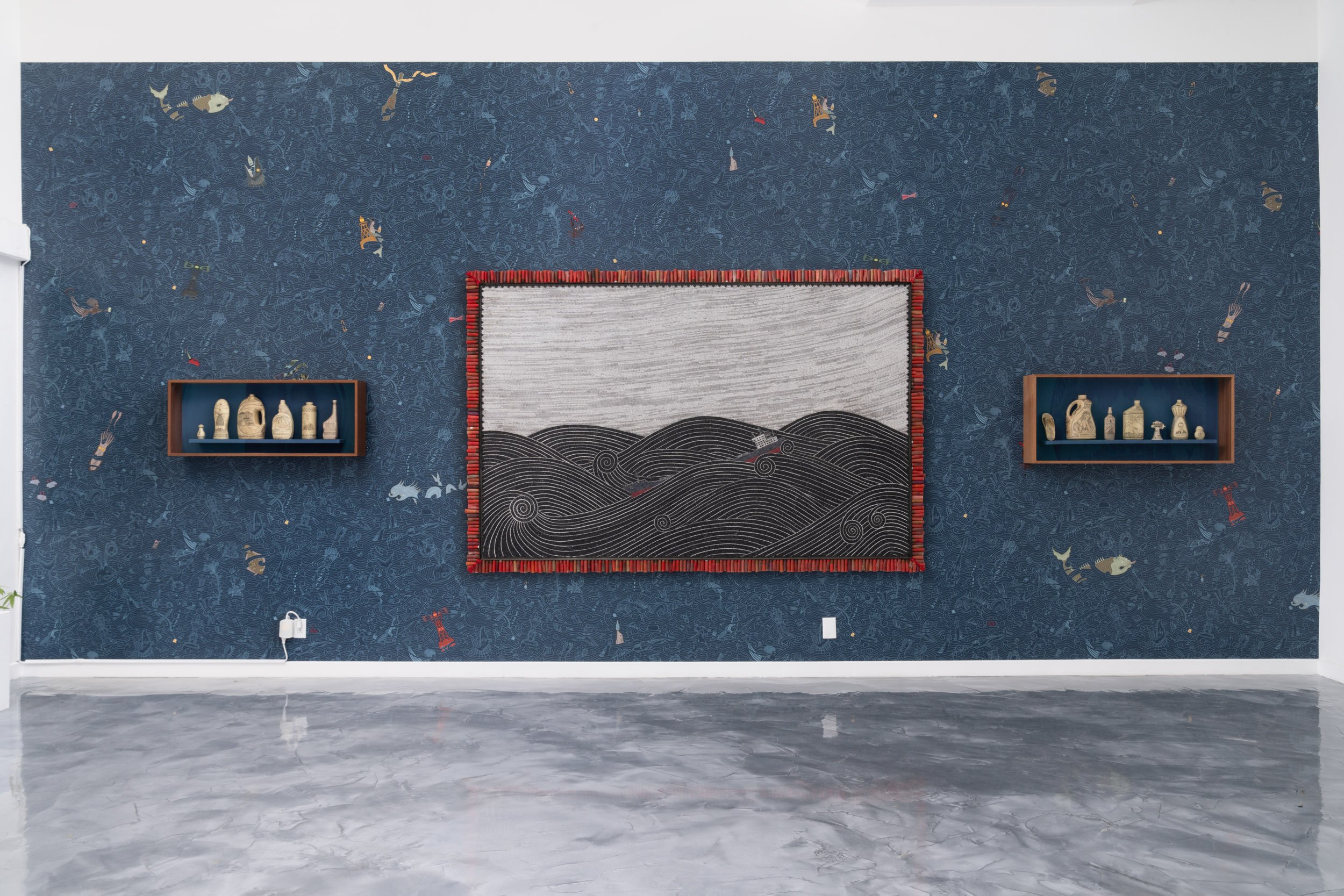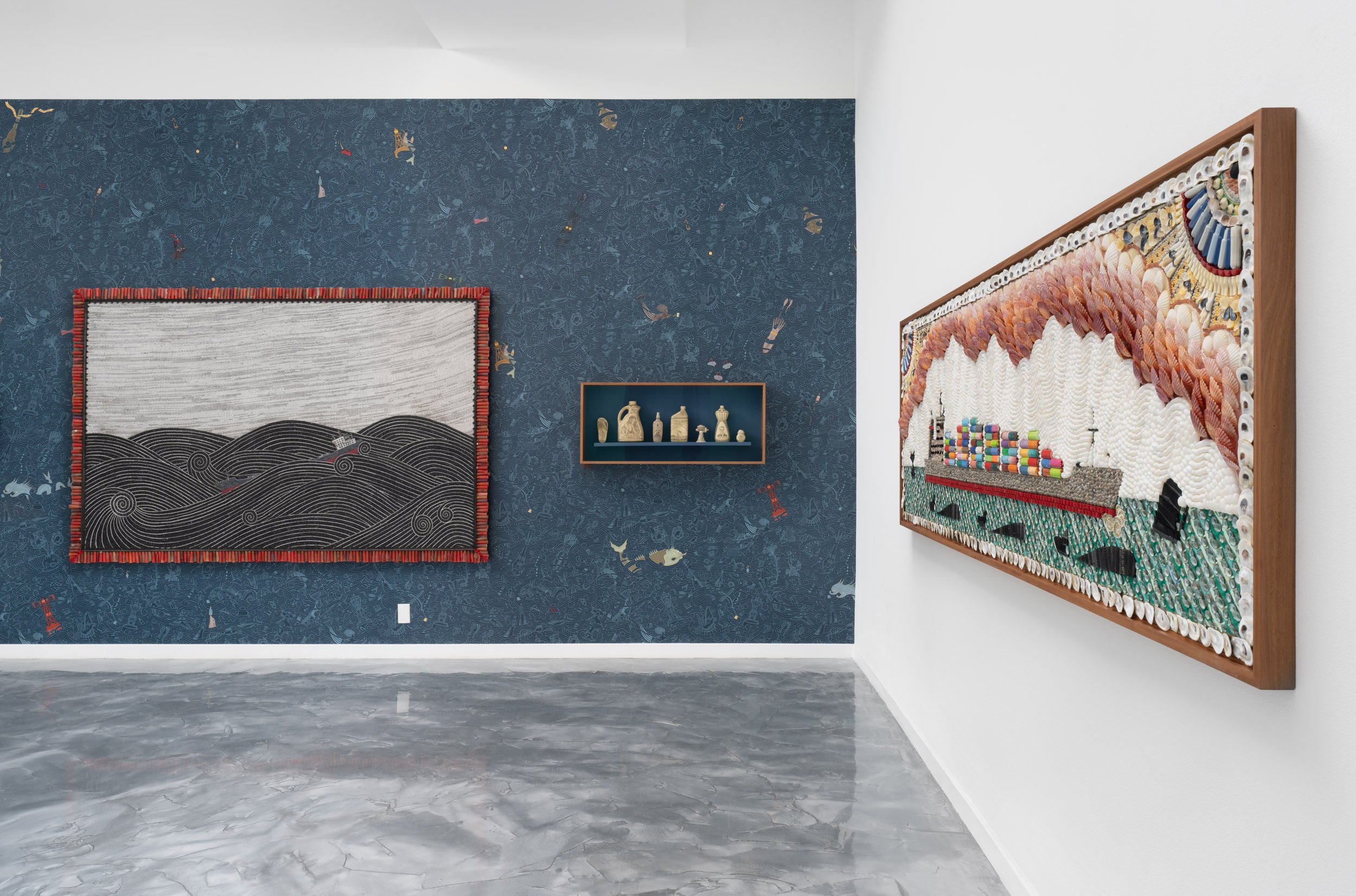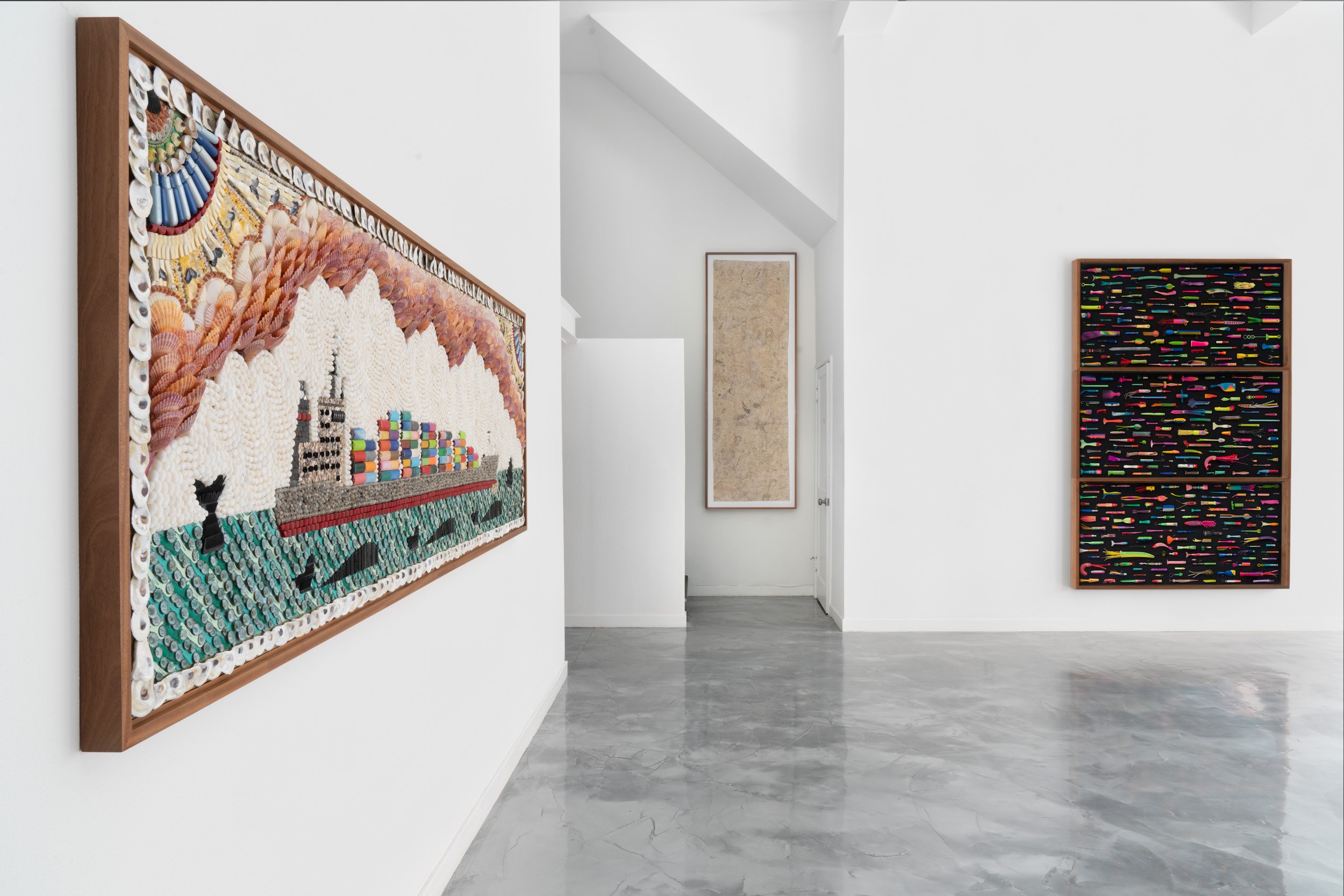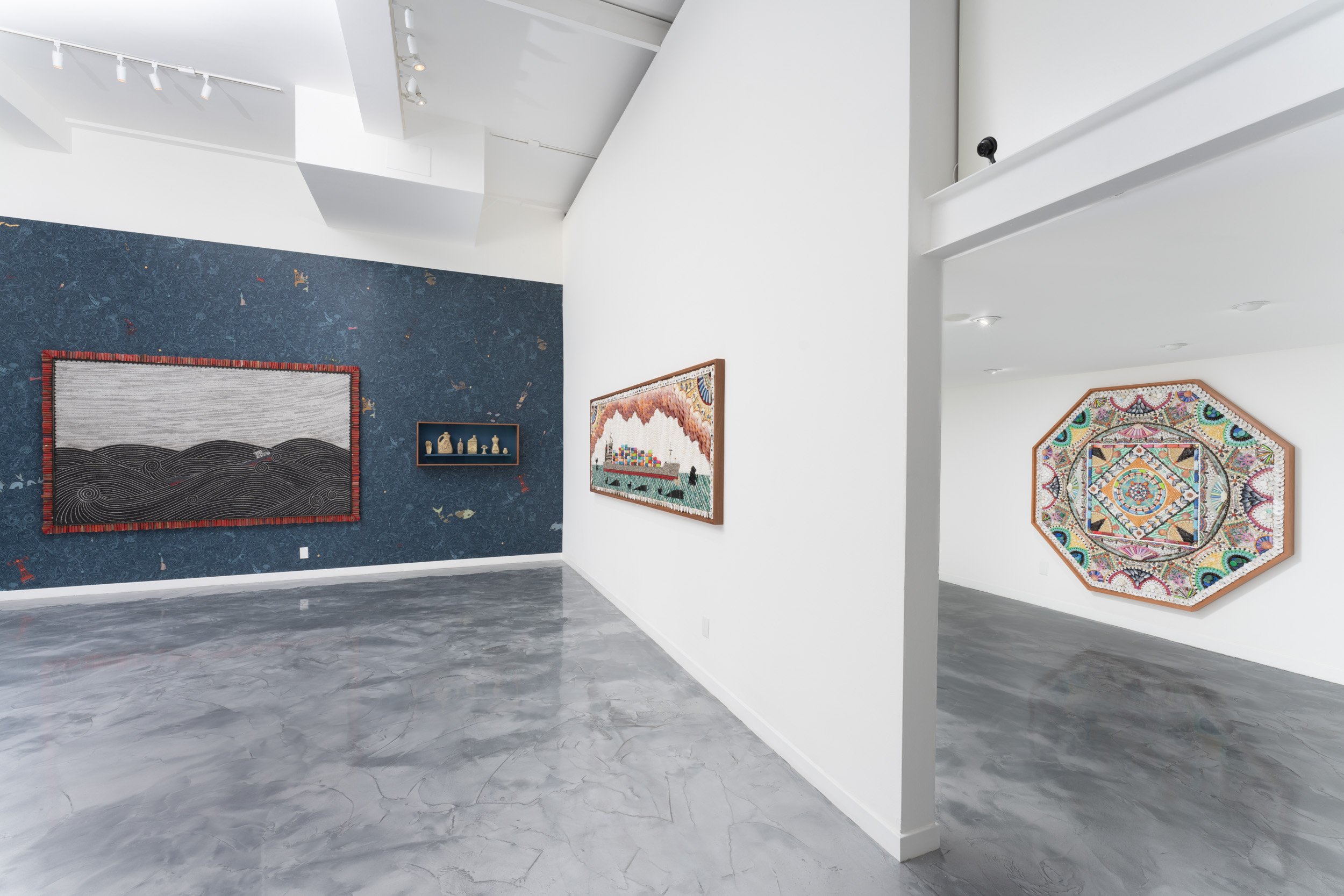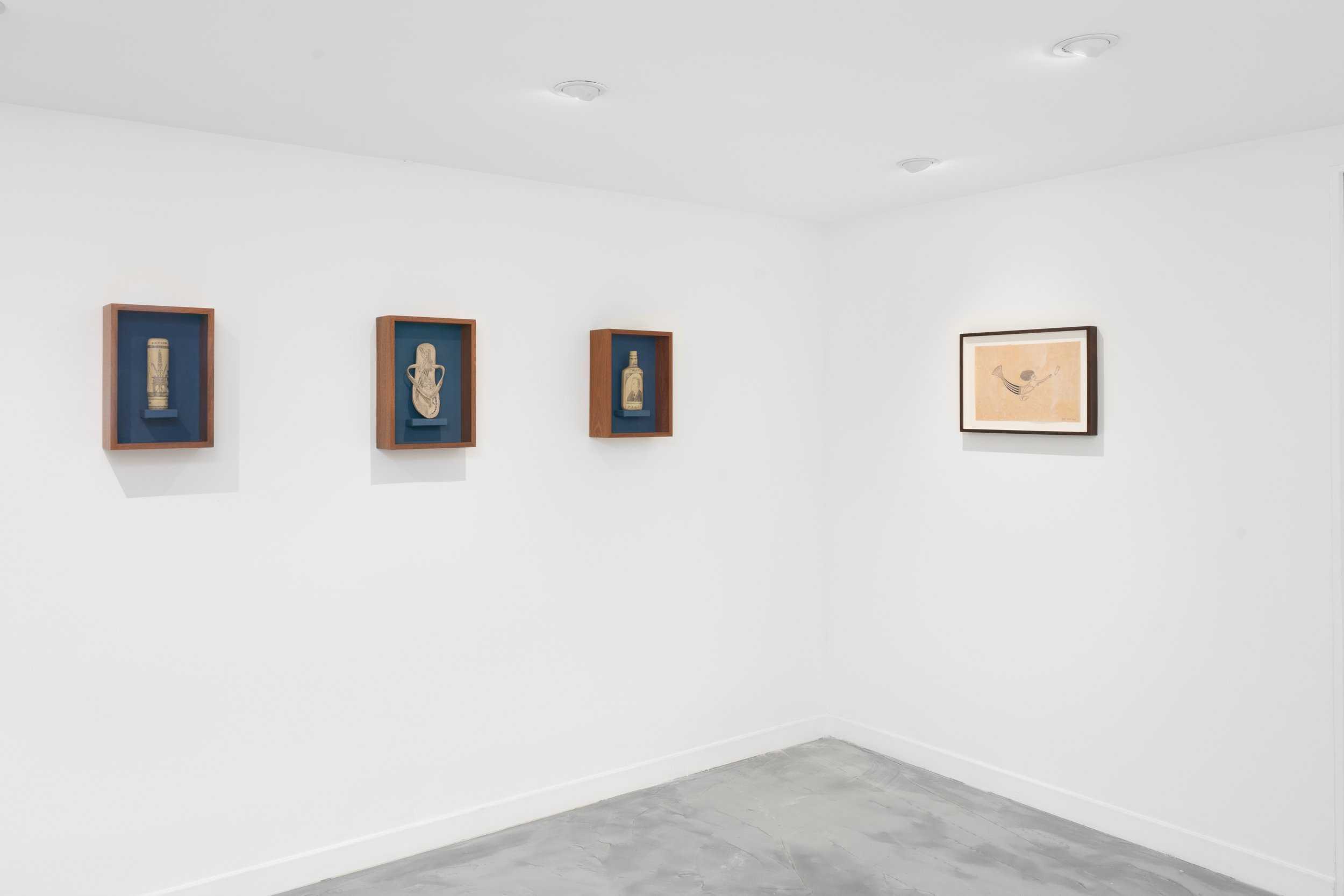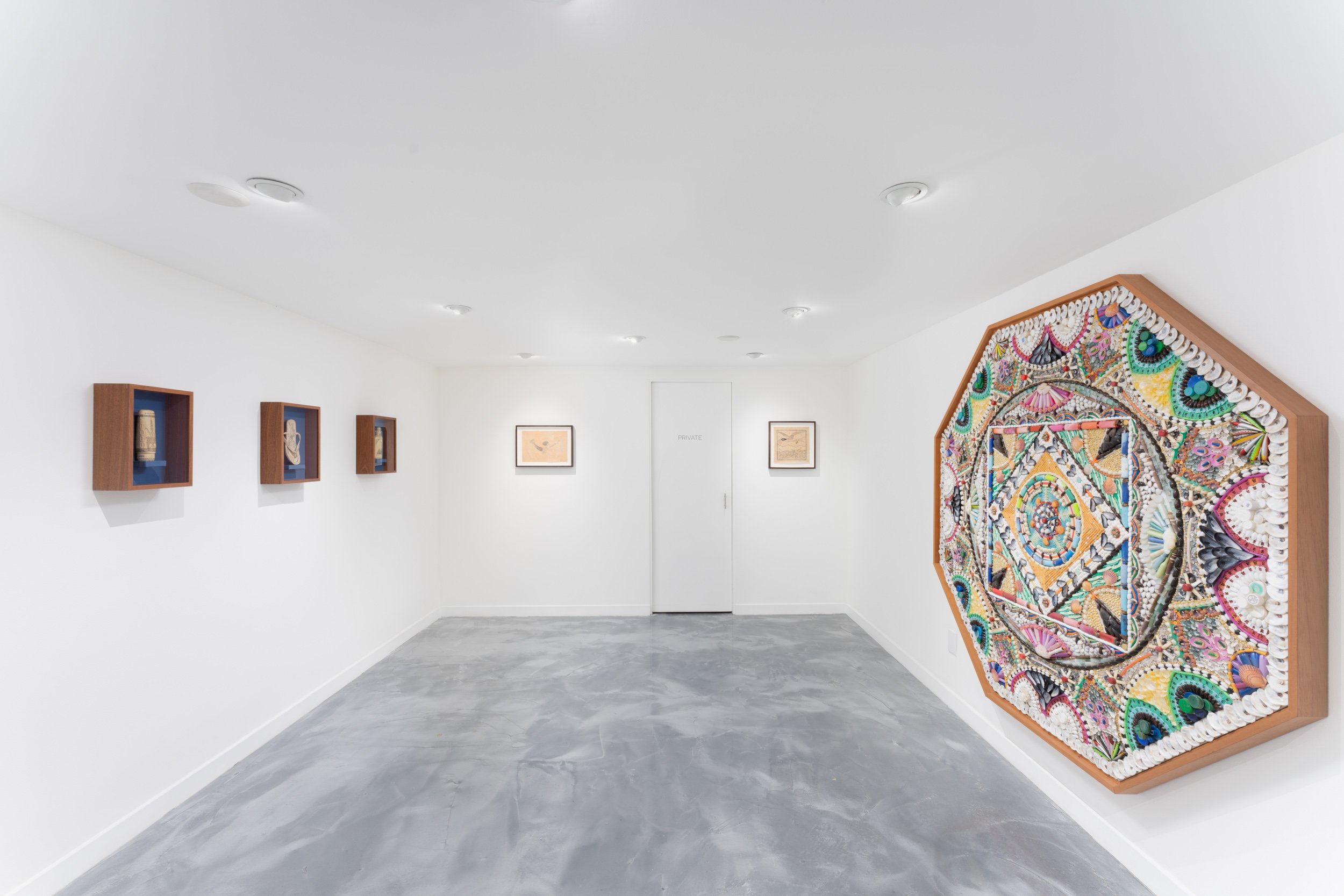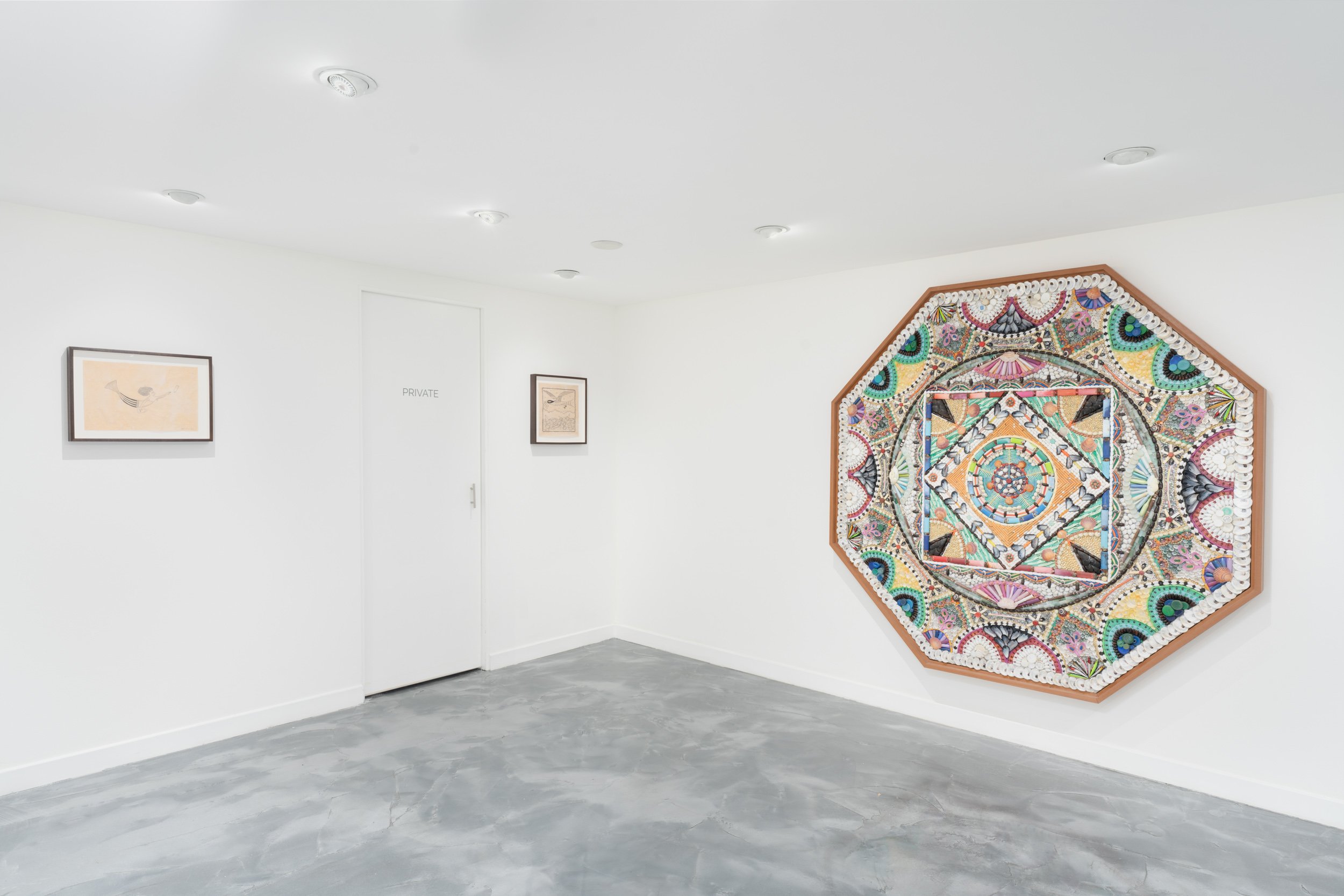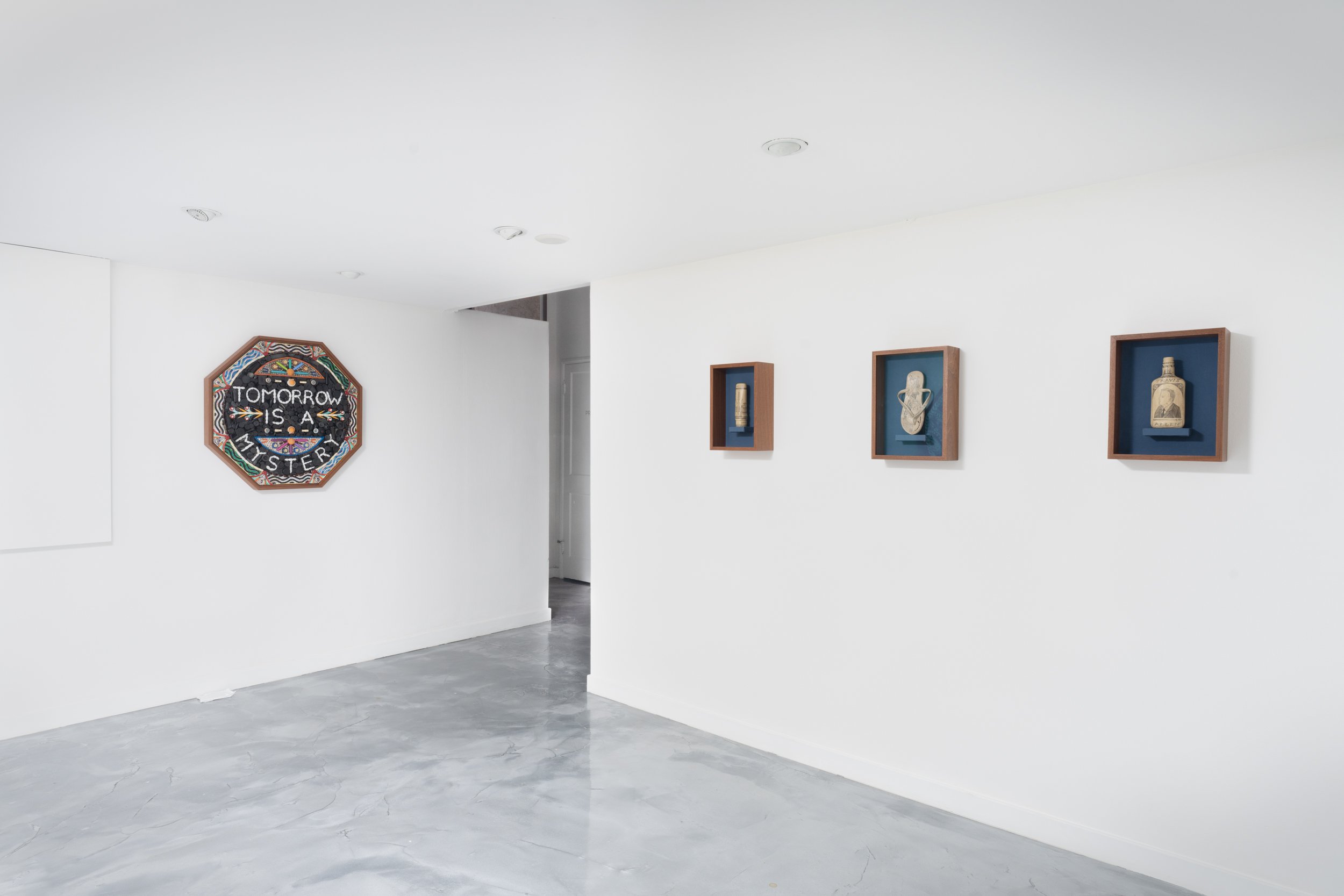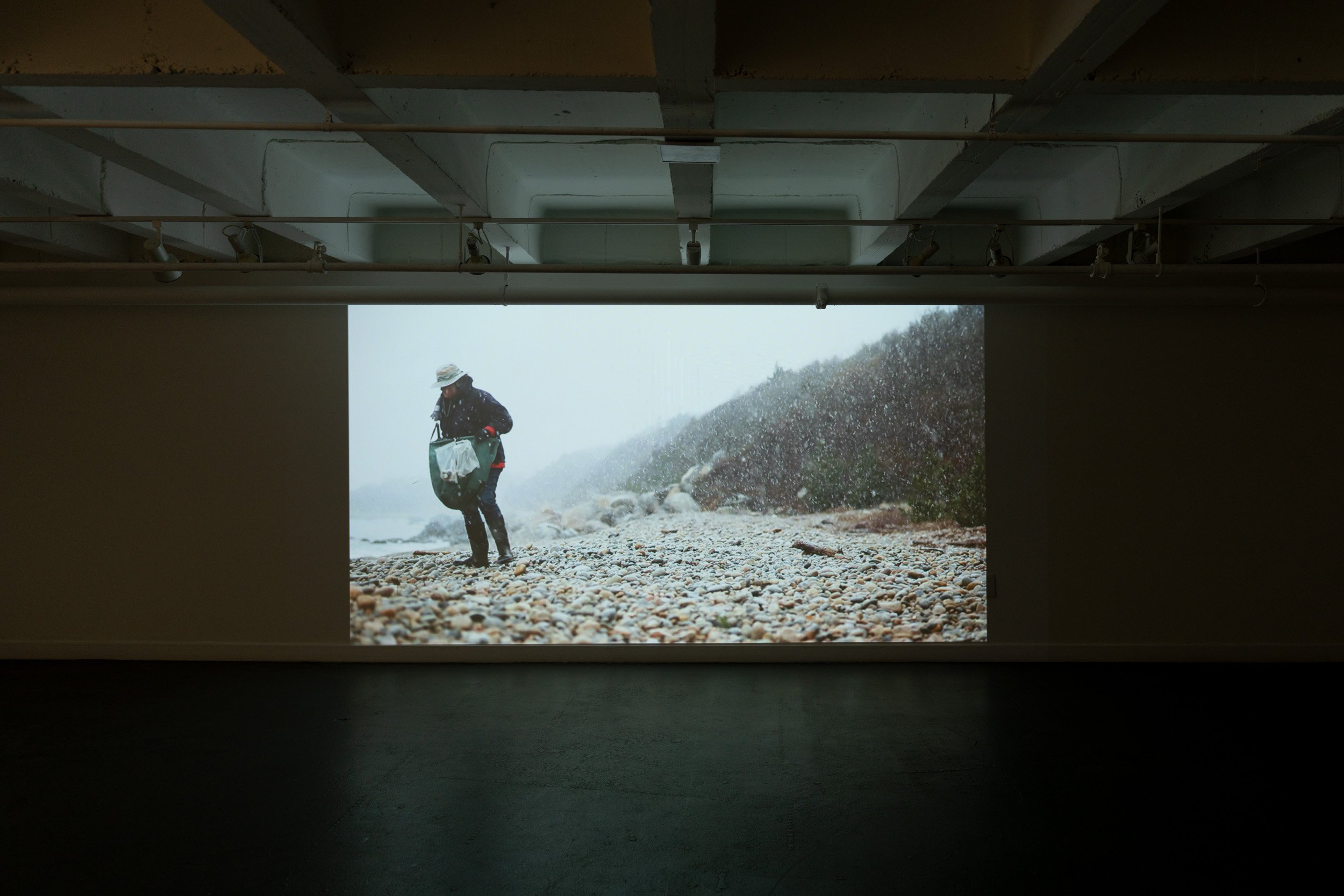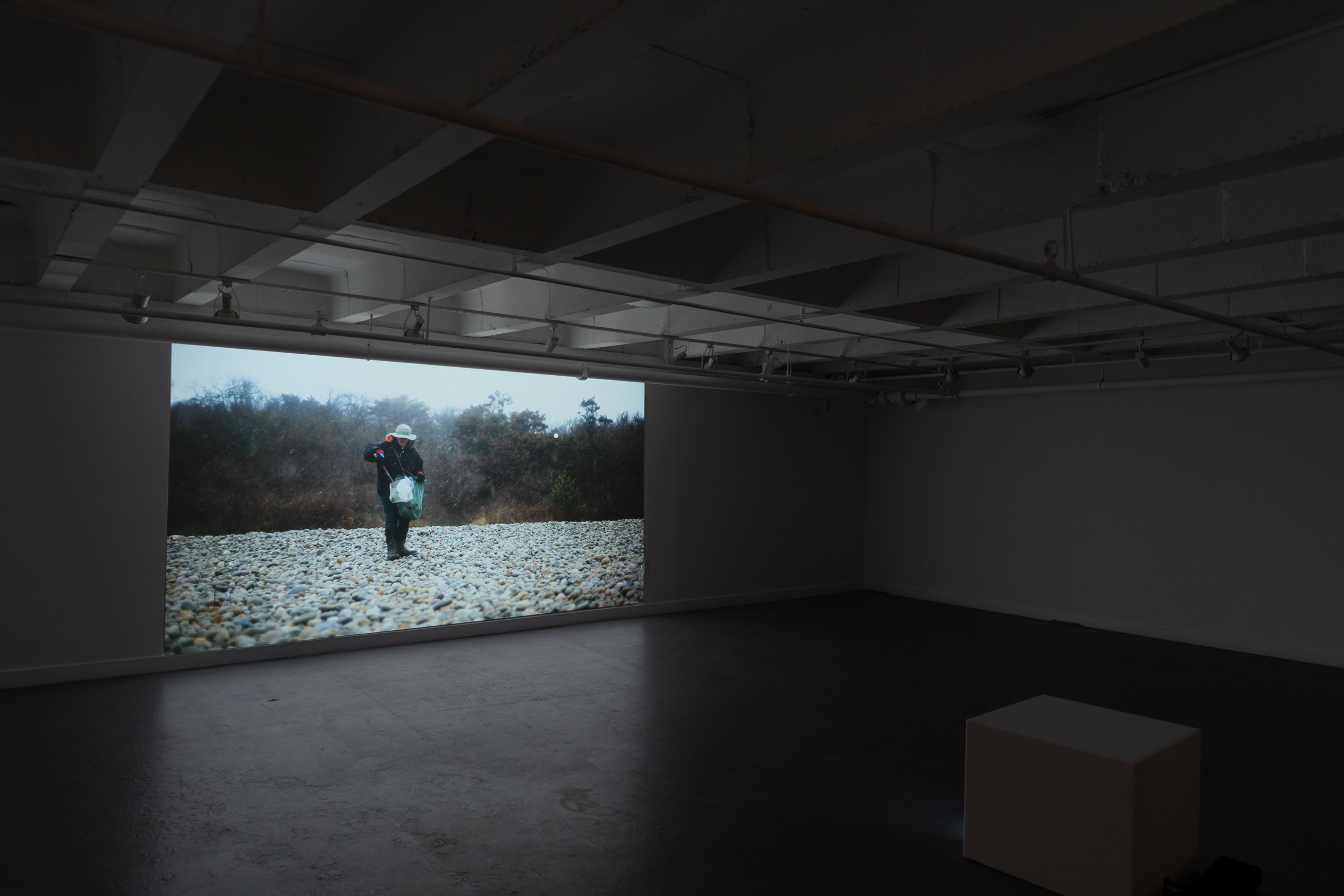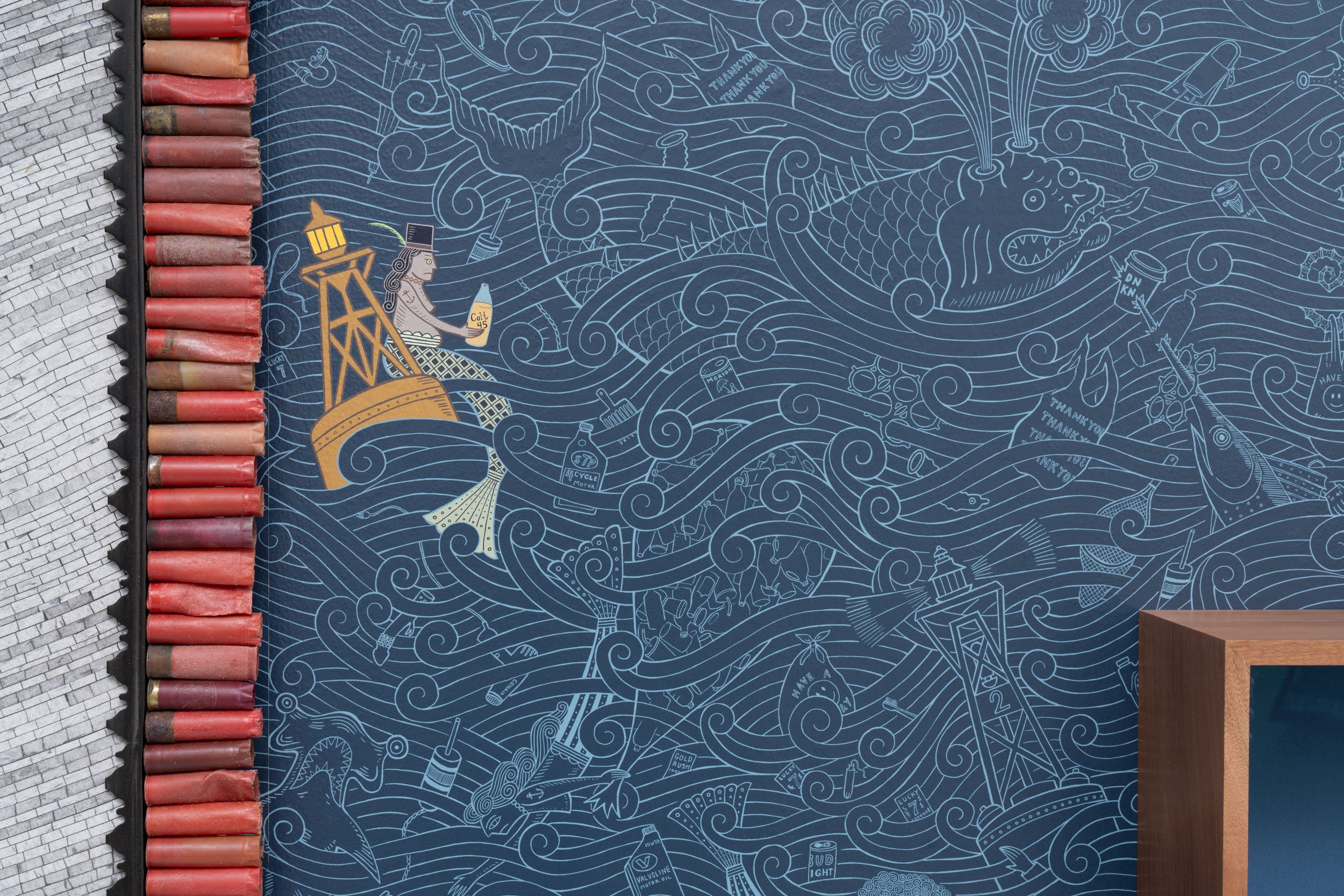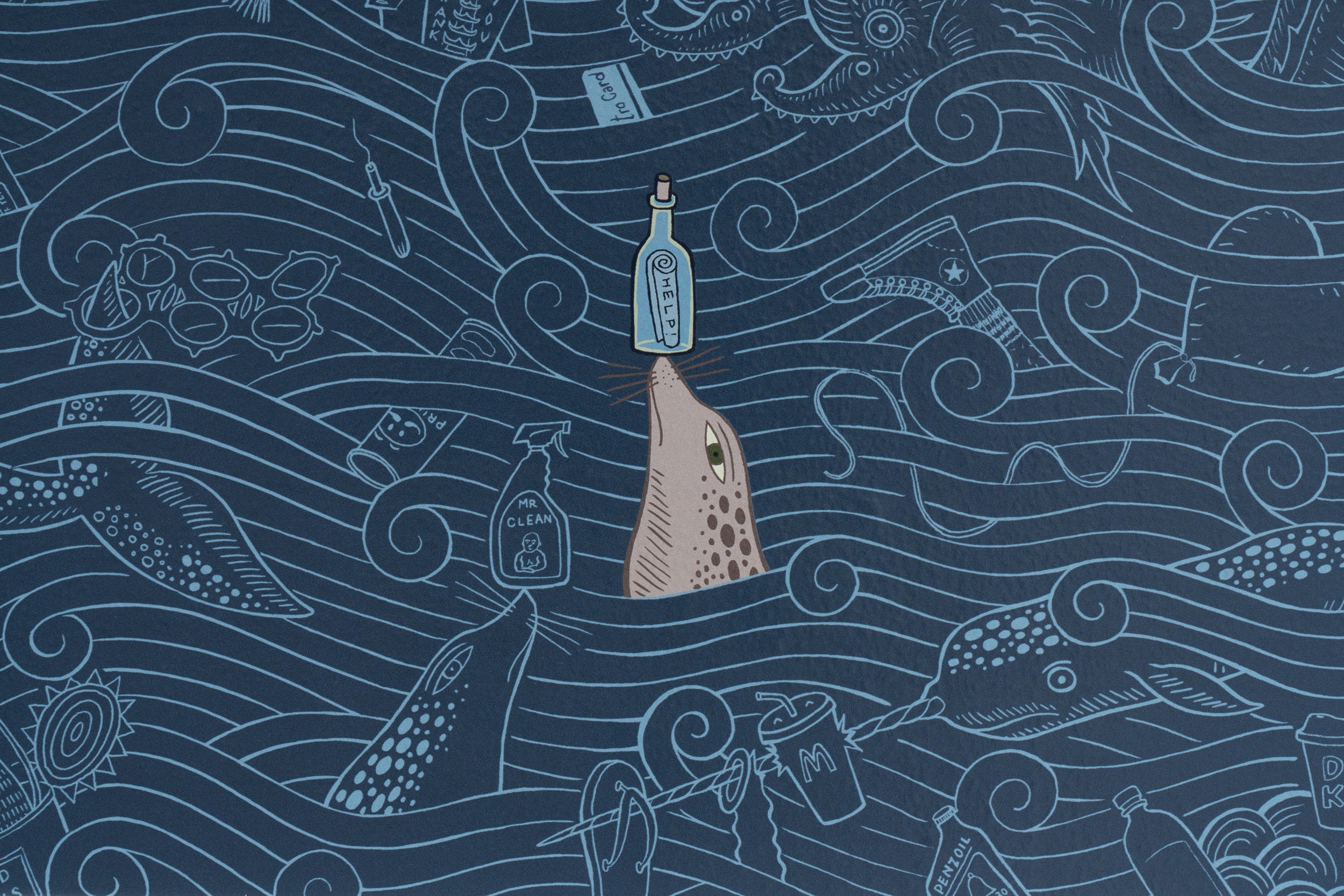Tomorrow is a Mystery
Duke Riley
Tomorrow is a Mystery
969 Chung King Road
september 16 - october 21, 2023
SHOW CATALOG (PDF)
PRESS RELEASE (PDF)
Charlie James Gallery is pleased to present Tomorrow is a Mystery, New York-based artist Duke Riley's second solo exhibition with the gallery, opening September 16. Riley is a multimedia artist whose practice circumnavigates the urban waterfront, and includes sculpture, drawing, tattoo, mosaic, video, and performance. Images and techniques from historic maritime culture inform Riley's aesthetic, which is infused with a sense of humor, anarchy, and winking political provocation. Riley is perhaps best-known for his 2016 Creative Time project Fly By Night, dubbed one of the works that "defined the decade," in which he choreographed an aerial ballet performed by hundreds of homing pigeons equipped with LED lights above the New York City skyline. Mostly recently, Riley closed out a widely acclaimed, yearlong exhibition at the Brooklyn Museum.
The title of the present exhibition, Tomorrow is a Mystery, alludes to the ominous, rhyming adage, "Yesterday is history, tomorrow's a mystery." The phrase is evocative of Riley's distinctive artistic approach, which combines rigorous research into forgotten niches of history with a career-long focus on contemporary environmental protection and ethics. The artist's commitment to the future health of the environment is both material and conceptual, as Riley primarily makes his work from single-use plastics he scavenges from the beaches and urban waterways of the American Northeast.
For over two decades, Riley has been making scrimshaw—a form of ink drawing etched into whale bone by sailors—out of repurposed plastic vessels like those used to hold laundry detergent or motor oil. In an era when the whaling industry was the dominant source of oil, scrimshaw often depicted sea captains or other titans of the field. On Riley's contemporary scrimshaw, he often pictures CEOs or lobbyists for the fossil fuel and plastics industries in the style of the oceanic profiteers of yesteryear. In the artist's words, these "new leaders of the sea," push us ever closer to a world in which petroleum-based plastic trash overwhelms oceanic ecosystems. By juxtaposing the romantic aesthetic of yesterday's whaling industry with the powerful industrial forces of today, the works in Tomorrow is a Mystery connect the ecological injustices of the past with our contemporary landscape of environmental catastrophe.
In addition to featuring Riley's scrimshaw, Tomorrow is a Mystery also presents the artist's work in other types of traditional maritime crafts, such as "sailor's valentines," fishing lures, and tattoo-style ink drawings. Sailor's valentines are octagonal mosaics made from a variety of seashells glued into concentric designs, and were popular souvenirs or gifts from whalers or merchant seamen to their loved ones when they returned home from sea. Riley's colorful mosaics also use seashells collected around the beaches of Brooklyn, but combine them with other materials he finds there as well, like Bic lighters, tampon applicators, bottle caps, and floss picks. The exhibition features an epically-scaled new mosaic depicting an industrial ship titled O'er The Wide and Plastic Sea. Additionally, Riley produces grids of vibrant, enticing, fishing lures from this variety of trash. For Riley, a lure is, in essence, an object designed to use the desires, psychology, and primal instincts of an animal against itself. From the series Monument to Five Thousand Years of Temptation and Deception, these meticulously crafted grids of lures serve as a poignant reminder of the widespread impact of consumerism and corporate-driven pollution on our oceans.
As a special feature of the exhibition, Riley presents a pair of short films titled "Welcome Back to Wasteland Fishing," first shown in the Brooklyn Museum exhibition, in the form of a kitschy, YouTube-style tutorial on how to repurpose plastic tampon-applicators, or "New Jersey beach whistles," as sea bass or fluke lures. Like all his work, the videos use wry humor and a bit of a crusty, punk rock ethos that produces a sense of empowerment and possibility in the face of the dark circumstances and political challenges. Throughout his creative practice, Riley explores the intersections of art, history, and environmental advocacy, shedding light on pressing global issues while pushing the boundaries of artistic mediums.
Duke Riley (Boston-born artist based in Brooklyn, NY) is a former tattoo artist who lived in a pigeon coop while attending RISD in the early 90s before earning his MFA from Pratt Institute. He taught art in underserved communities and domestic violence shelters in Boston and New York City in the late 90s and early 2000s. In 2007, Riley made headlines after being arrested for piloting a homemade submarine into the security zone of the Queen Mary 2 in New York Harbor as part of the project After the Battle of Brooklyn. Over the past two decades, he has produced critically acclaimed works that explore the interface of institutional power and the natural world. Some of these often extralegal projects include trained pigeons smuggling cigars from Cuba to Key West, a suitcase of bed bugs that appeared in a Trump hotel, flying 2000 pigeons wearing LED lights over the East River from an aircraft carrier. and an action movie written and filmed by inmates in a Somali pirate detention center. Duke Riley has had solo exhibitions at the Queens Museum of Art, Havana Biennale, MOCA Cleveland, the Sydney Biennale, and recently closed a year long exhibition at the Brooklyn Museum of Art titled Death to the Living, Long Live Trash.
Artist Instagram: @dukerileystudio












